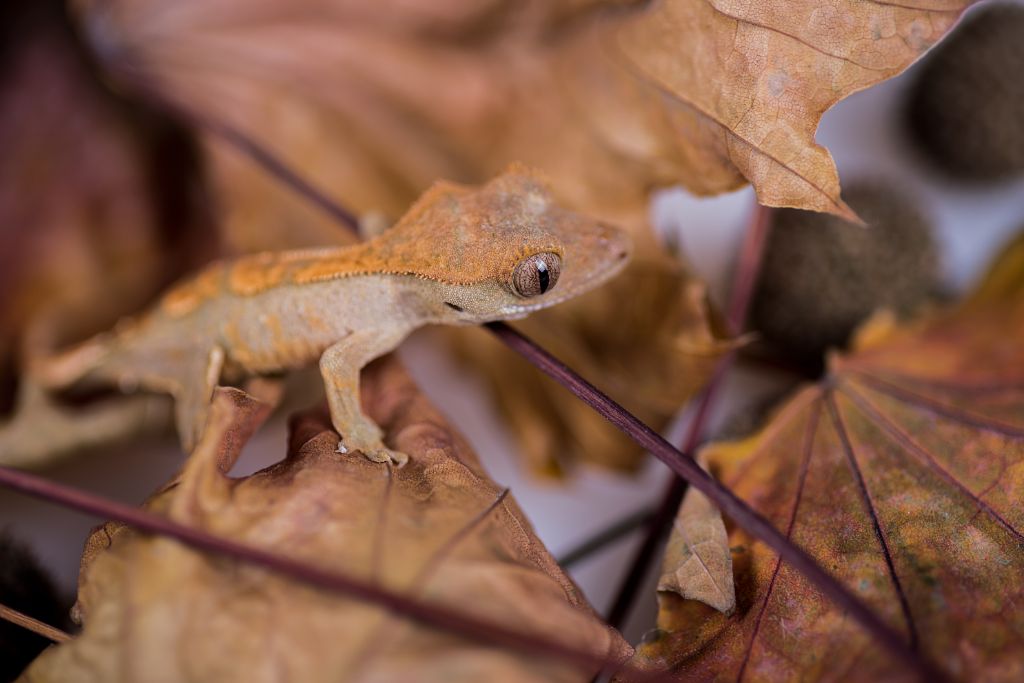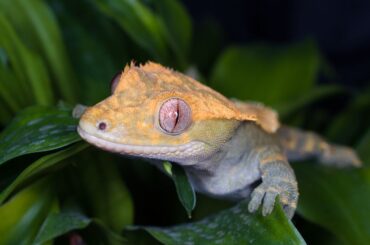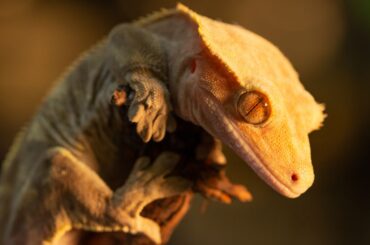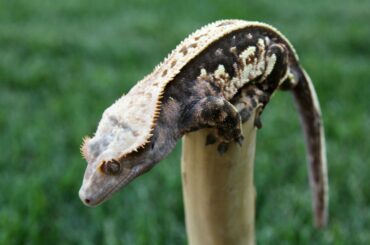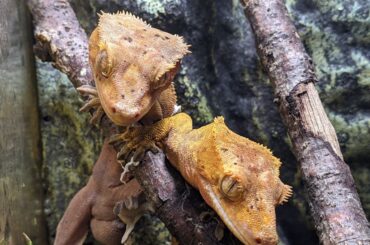What do crested geckos need in their habitat? Why is a proper tank setup crucial for crested geckos? How can I create the perfect environment for my pet gecko? Before you bring one of these critters into your home, you’ll need to set up a suitable habitat for them.
A habitat that matches your crested gecko’s native environment is crucial for their health. These arboreal reptiles need a tropical rainforest-like tank to stay healthy and happy. Every detail of their habitat matters, from the right temperature and humidity levels to the appropriate foliage and hiding spots.
Crested Gecko Natural Habitat
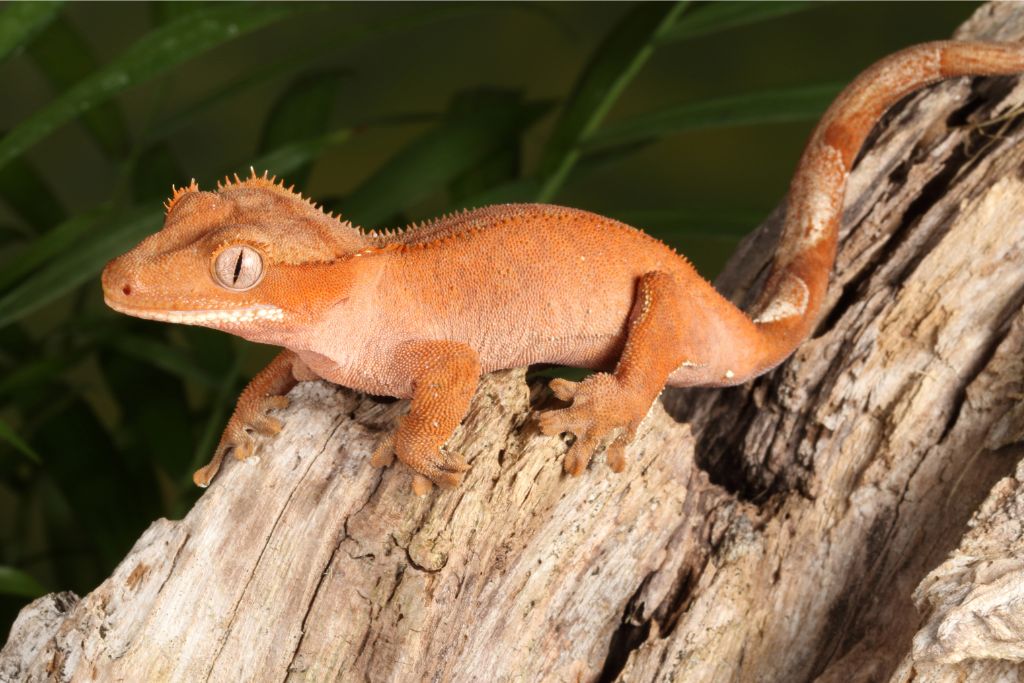
New Caledonia in the South Pacific is home to these little reptiles. Tropical jungles and luxuriant woodlands are their native home.
A row of fringed scales from head to tail gives crested geckos their characteristic appearance. Their prehensile tails allow them to grab branches and foliage. They are 6 to 10 inches long.
These remarkable creatures are adapted to their natural habitat, making them intriguing subjects for study and observation.
Key Elements Of A Crested Gecko Cage
Before discussing their habitat, crested geckos need a pleasant and safe environment in captivity. Let’s look into what makes that cage so ideal for them.
Crested Gecko Enclosure Selection
There are several options when finding the perfect abode for your scaly friend. Glass terrariums, bioactive setups, and more provide various choices for your gecko’s comfort and happiness.
Glass Terrariums
When selecting an enclosure for your crested gecko, glass terrariums are popular and user-friendly. They provide a clear view of your gecko’s activities and are easy to maintain.
Ensure the terrarium’s size is appropriate, allowing ample room for your gecko to move and climb. Ventilation is vital, so look for models with well-placed mesh tops to keep the air fresh.
Bioactive Setup
A bioactive setup is an excellent choice for a natural and captivating environment. These enclosures mimic the gecko’s natural habitat, fostering a more enriching experience. A bioactive setup often includes live plants and a self-sustaining ecosystem.
Ensure the enclosure is appropriately sized to accommodate your gecko and the plants. Choose an enclosure with easy-to-open doors or access ports for feeding and upkeep.
PVC Enclosures
PVC enclosures are another suitable option, known for their durability and insulation properties. They are available in various sizes and are easy to clean.
Make sure to choose an enclosure that offers proper ventilation through built-in vents or suitable modifications. Choose a model with easy access to your gecko and maintenance tasks.
Substrate Choices For Crested Gecko Setup

Crested geckos are unique little creatures, and creating a comfortable and safe environment is essential. Explore substrate options to keep your gecko’s home perfect!
Coconut Coir
Coconut coir is a fantastic choice for crested gecko bedding. It’s soft, retains moisture well, and resembles the forest floor, mimicking its natural habitat. Plus, it’s eco-friendly and easy to maintain.
Sphagnum Moss
Sphagnum moss is like a moisture magnet! It holds onto water and provides a cozy, humid environment that crested geckos adore. You can use it as a top layer or mix it with other substrates for enhanced moisture retention.
Cypress Mulch
Cypress mulch is excellent for holding humidity levels steady. A natural look in a gecko’s terrarium is possible with it. Keep it wet to avoid drying.
Bioactive Soil
Bioactive soil is a more advanced choice but offers a self-sustaining ecosystem for your gecko. It contains beneficial microorganisms that help break down waste and keep the enclosure clean
and healthy.
Paper Towels
Paper towels can be used temporarily if you’re looking for a straightforward option. They’re easy to replace, maintain cleanliness, and ensure your gecko doesn’t accidentally ingest any substrate.
Eco Earth
Eco Earth is a coconut coir-based substrate with excellent moisture retention. It’s also great for burrowing, which crested geckos sometimes enjoy doing.
Orchid Bark
Orchid bark is another natural-looking choice that holds moisture well. It’s sturdy and long-lasting, making it a good option for geckos that like to explore.
Temperature And Lighting
The correct temperature is essential for your pet’s health. A good temperature range for most reptiles is 75 to 84℉ (24 to 29℃). Like a warm blanket on a cold day.
When it’s cold, your reptile may slow down and have difficulties digesting. Too much heat might stress and dehydrate them. Keeping their environment within this temperature range is like giving them a perfect place to hang out.
UVB lighting is like a sunlight machine for your scaly friend. It’s essential for reptiles because it helps them make vitamin D, their secret ingredient for healthy bones. Like how we need our daily dose of sunshine, reptiles need UVB light to metabolize calcium properly.
Humidity Control
Crested geckos need proper humidity regulation in their tanks to stay healthy. Imagine you’re a crested gecko, and you come from the lush rainforests of New Caledonia. You’re used to a certain level of moisture in the air. Maintaining the proper humidity in your tank helps recreate that natural environment.
First, it’s essential for shedding. The correct humidity helps crested geckos shed their skin readily and comfortably. Second, it helps them breathe better because they absorb some of the water they need through their skin. Lastly, it prevents dehydration and keeps them active and happy. Keeping the humidity right is like giving them a little piece of their forest home!
Tips And Techniques For Regulating Humidity
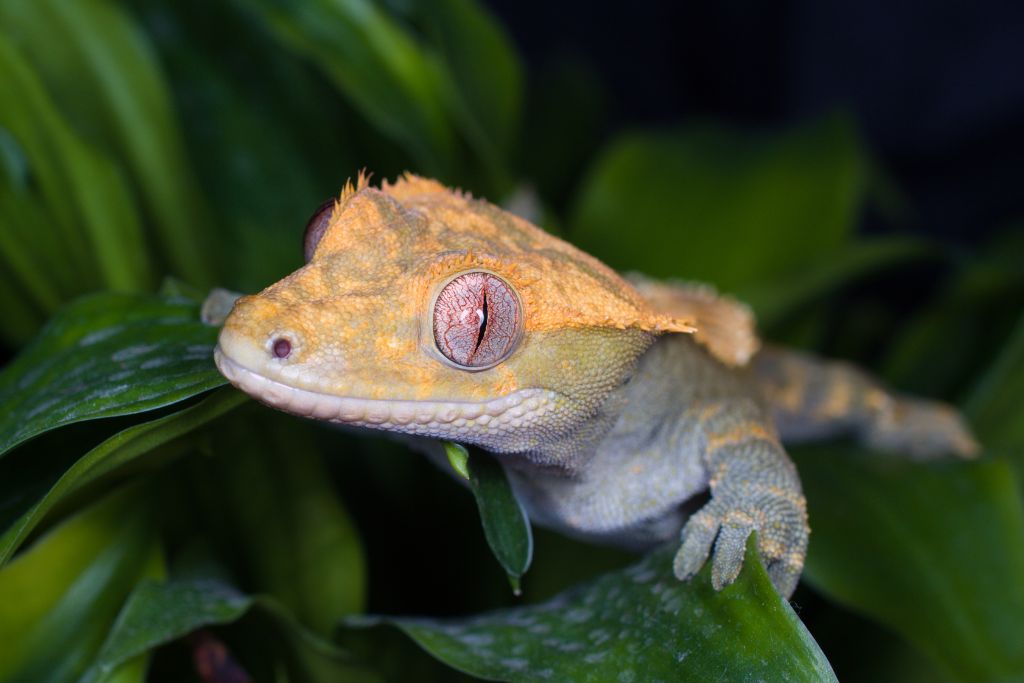
Water vapor in the air is humidity. Crested geckos need sufficient humidity for health. Here are some simple ways to keep your crested gecko’s habitat humid:
- Spray the Enclosure: Regularly misting your crested gecko’s tank with water helps increase humidity. Use a spray bottle to mist the tank lightly, focusing on the substrate and foliage. This makes your gecko more comfortable.
- Use a Hygrometer: A hygrometer is a handy tool that measures humidity levels. Place it in your gecko’s tank to monitor the humidity regularly. Keeping it within the 50-70% range for crested geckos is essential.
- Provide a Moist Hide: Create a designated moist hide in one corner of the tank with dampened moss or paper towels. This area will give your gecko a place to retreat when it needs more humidity.
- Choose the Right Substrate: Opt for substrates that retain moisture, such as coconut coir or cypress mulch. These materials can help maintain humidity levels in the enclosure.
- Ventilation is Key: While humidity is essential, it’s equally crucial to ensure proper ventilation. Use a screen top or vents to allow air circulation while retaining moisture.
- Live Plants: Adding live plants to the tank makes it look beautiful and helps maintain humidity levels. The plants release moisture through transpiration, creating a more natural and balanced environment.
- Adjusting Water Dishes: The size and number of water dishes can influence humidity. Use larger water dishes or add extra ones to increase the overall humidity in the tank.
Foliage And Decor For Crested Gecko Terrarium
Here’s a brief and engaging guide to creating a captivating crested gecko terrarium with suitable foliage and decor:
- Lush Plants: To make your crested gecko feel at home, include plants like pothos and snake plant. These plants not only provide a natural feel but also offer an excellent climbing opportunity for your gecko.
- Hiding Spots: Crested geckos appreciate their privacy. Include hollow logs or cork bark hides for quiet escapes from the spotlight.
- Artificial Vines: Artificial vines and branches can provide your gecko more territory in the terrarium, along with genuine plants. Plus, they love to climb and explore their surroundings.
- Mossy Retreats: Create small mossy areas within the terrarium. Moss adds to the aesthetic and helps maintain humidity, which is essential for your crested gecko’s well-being.
- Branches for Climbing: Install different-sized branches and driftwood to encourage your gecko’s natural behavior of climbing and exploring. This adds a fun and adventurous touch to their habitat.
- Basking Perch: A vital part of crested gecko care is a flat basking perch to soak up the sun.
Feeding And Watering
These adorable arboreal critters love to climb trees like little acrobats. They prefer warm, humid conditions because they come from New Caledonia’s lush rainforests. Remember this when caring for your gecko.
What To Feed Your Crested Gecko
When it comes to mealtime, crested geckos are insectivores, which means they primarily eat insects. Their diet also includes fruit and nectar. For your gecko’s health, feed it crickets, roaches, and a powdered crested gecko diet from pet stores.
Feeding Schedule
To keep your gecko content and healthy, aim to feed them every other day. This routine mimics their natural eating habits. If you’re offering live insects, ensure they are appropriately sized for your gecko. Remember, variety is the spice of life, so mix up their diet with different insects and fruit flavors.
Supplements
Just like we need our vitamins, crested geckos benefit from supplements. Dust their live insects with calcium powder at every feeding and give them a vitamin supplement once a week to prevent nutritional deficits. This ensures they receive all the essential nutrients for growth and vitality.
Maintenance And Cleaning
Keeping your gecko’s enclosure clean and well-maintained is essential for your pet’s health and happiness. Regularly clean your gecko’s habitat to ensure it stays in a safe and comfortable home.
Start by wiping down the glass or plastic walls with a damp cloth to remove dirt or smudges. Clean the substrate (the material on the enclosure floor) by scooping out waste daily and replacing it every 2 to 4 weeks. Be sure to remove any uneaten food promptly to prevent mold and bacteria growth.
Cleaning frequency is vital. It’s best to clean your gecko’s enclosure at least once a month to maintain a hygienic environment. Look for any signs of mold, mites, or a strong odor, which can indicate a problem.
Conclusion
Embracing responsible pet ownership is crucial for the well-being of our scaly companions. By providing love, care, and proper attention, we create a safe and loving environment for our pets to thrive. Equally important is the power of research. Understanding our pet’s needs, interests, and behaviors strengthens our bond and helps us make good decisions.
Let’s pledge to be conscientious pet parents and explore the fascinating world of pet science. See a veterinarian or animal expert if you need help or need help. They support us in giving our pets the best life possible.
FAQs
What Size Tank Does A Crested Gecko Need?
Due to their arboreal nature, crested geckos need at least 20 gallons of vertical space.
Can Crested Geckos Go In Screen Cages?
Screen cages are suitable for crested geckos, as they provide good ventilation and mimic their natural habitat. However, the screen should be fine enough to prevent escapes.
Do Crested Geckos Need A Pool?
Crested geckos don’t need a traditional water pool. They get their hydration from licking water droplets off leaves and enclosure surfaces. A small, shallow dish with water may be provided, but it’s not for swimming.

